
Stewart Brand Books - 75 Must-Reads to Save Civillization
Stewart Brand
Steward Brand has created a list of the books that will help future generations build and rebuild civilizations if something happens. Lists like that are extremely valuable because they conglomerate information of enormous significance.
We appreciated Stewart Brand's reading list, so you can save it somewhere and enjoy it later.
It is an ultimate Stewart Brand books list that consists of 75 essential reading recommendations.
This book list will be interesting to people who love history, art, the structure of governments, geology, psychology, and critical thinking and are simply curious to find out how the world around works.
Check out Stewart Brand favorite books - 75 books worth leaving as a legacy to our kids.
See all
0
likes
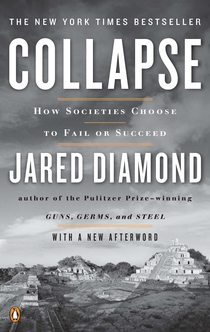
Collapse
From the author of Guns, Germs and Steel, Jared Diamond's Collapse: How Societies Choose to Fail or Survive is a visionary study of the mysterious downfall of past civilizations.Now in a revised edition with a new afterword, Jared Diamond's Collapse uncovers the secret behind why some societies flourish, while others founder - and what this means for our future.What happened to the people who made the forlorn long-abandoned statues of Easter Island?What happened to the architects of the crumbling Maya pyramids?Will we go the same way, our skyscrapers one day standing derelict and overgrown like the temples at Angkor Wat?Bringing together new evidence from a startling range of sources and piecing together the myriad influences, from climate to culture, that make societies self-destruct, Jared Diamond's Collapse also shows how - unlike our ancestors - we can benefit from our knowledge of the past and learn to be survivors.'A grand sweep from a master storyteller of the human race' - Daily Mail'Riveting, superb, terrifying' - Observer'Gripping ... the book fulfils its huge ambition, and Diamond is the only man who could have written it' - Economis'This book shines like all Diamond's work' - Sunday Times
See all
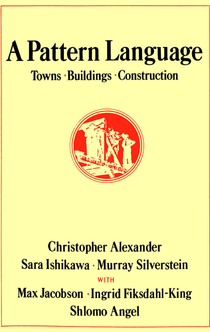
A Pattern Language
You can use this book to design a house for yourself with your family; you can use it to work with your neighbors to improve your town and neighborhood; you can use it to design an office, or a workshop, or a public building. And you can use it to guide you in the actual process of construction. After a ten-year silence, Christopher Alexander and his colleagues at the Center for Environmental Structure are now publishing a major statement in the form of three books which will, in their words, "lay the basis for an entirely new approach to architecture, building and planning, which will we hope replace existing ideas and practices entirely." The three books are The Timeless Way of Building, The Oregon Experiment, and this book, A Pattern Language. At the core of these books is the idea that people should design for themselves their own houses, streets, and communities. This idea may be radical (it implies a radical transformation of the architectural profession) but it comes simply from the observation that most of the wonderful places of the world were not made by architects but by the people. At the core of the books, too, is the point that in designing their environments people always rely on certain "languages," which, like the languages we speak, allow them to articulate and communicate an infinite variety of designs within a forma system which gives them coherence. This book provides a language of this kind. It will enable a person to make a design for almost any kind of building, or any part of the built environment. "Patterns," the units of this language, are answers to design problems (How high should a window sill be? How many stories should a building have? How much space in a neighborhood should be devoted to grass and trees?). More than 250 of the patterns in this pattern language are given: each consists of a problem statement, a discussion of the problem with an illustration, and a solution. As the authors say in their introduction, many of the patterns are archetypal, so deeply rooted in the nature of things that it seemly likely that they will be a part of human nature, and human action, as much in five hundred years as they are today.
See all

Thinking, Fast and Slow
Major New York Times bestsellerWinner of the National Academy of Sciences Best Book Award in 2012Selected by the New York Times Book Review as one of the ten best books of 2011A Globe and Mail Best Books of the Year 2011 TitleOne of The Economist's 2011 Books of the Year One of The Wall Street Journal's Best Nonfiction Books of the Year 20112013 Presidential Medal of Freedom RecipientKahneman's work with Amos Tversky is the subject of Michael Lewis's The Undoing Project: A Friendship That Changed Our MindsIn the international bestseller, Thinking, Fast and Slow, Daniel Kahneman, the renowned psychologist and winner of the Nobel Prize in Economics, takes us on a groundbreaking tour of the mind and explains the two systems that drive the way we think. System 1 is fast, intuitive, and emotional; System 2 is slower, more deliberative, and more logical. The impact of overconfidence on corporate strategies, the difficulties of predicting what will make us happy in the future, the profound effect of cognitive biases on everything from playing the stock market to planning our next vacation—each of these can be understood only by knowing how the two systems shape our judgments and decisions.Engaging the reader in a lively conversation about how we think, Kahneman reveals where we can and cannot trust our intuitions and how we can tap into the benefits of slow thinking. He offers practical and enlightening insights into how choices are made in both our business and our personal lives—and how we can use different techniques to guard against the mental glitches that often get us into trouble. Winner of the National Academy of Sciences Best Book Award and the Los Angeles Times Book Prize and selected by The New York Times Book Review as one of the ten best books of 2011, Thinking, Fast and Slow is destined to be a classic.
See all

The Better Angels of Our Nature
“If I could give each of you a graduation present, it would be this—the most inspiring book I've ever read."—Bill Gates (May, 2017)Selected by The New York Times Book Review as a Notable Book of the YearThe author of Enlightenment Now and The New York Times bestseller The Stuff of Thought offers a controversial history of violence.Faced with the ceaseless stream of news about war, crime, and terrorism, one could easily think we live in the most violent age ever seen. Yet as New York Times bestselling author Steven Pinker shows in this startling and engaging new work, just the opposite is true: violence has been diminishing for millenia and we may be living in the most peaceful time in our species's existence. For most of history, war, slavery, infanticide, child abuse, assassinations, programs, gruesom punishments, deadly quarrels, and genocide were ordinary features of life. But today, Pinker shows (with the help of more than a hundred graphs and maps) all these forms of violence have dwindled and are widely condemned. How has this happened?This groundbreaking book continues Pinker's exploration of the esesnce of human nature, mixing psychology and history to provide a remarkable picture of an increasingly nonviolent world. The key, he explains, is to understand our intrinsic motives--the inner demons that incline us toward violence and the better angels that steer us away--and how changing circumstances have allowed our better angels to prevail. Exploding fatalist myths about humankind's inherent violence and the curse of modernity, this ambitious and provocative book is sure to be hotly debated in living rooms and the Pentagon alike, and will challenge and change the way we think about our society.
See all
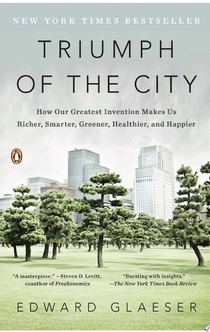
Triumph of the City
A pioneering urban economist presents a myth-shattering look at the majesty and greatness of citiesAmerica is an urban nation, yet cities get a bad rap: they're dirty, poor, unhealthy, environmentally unfriendly . . . or are they? In this revelatory book, Edward Glaeser, a leading urban economist, declares that cities are actually the healthiest, greenest, and richest (in both cultural and economic terms) places to live. He travels through history and around the globe to reveal the hidden workings of cities and how they bring out the best in humankind. Using intrepid reportage, keen analysis, and cogent argument, Glaeser makes an urgent, eloquent case for the city's importance and splendor, offering inspiring proof that the city is humanity's greatest creation and our best hope for the future."A masterpiece."—Steven D. Levitt, coauthor of Freakonomics"Bursting with insights."—The New York Times Book Review
See all

Causes of War, 3rd Ed.
The peace that passeth understanding -- Paradise is a bazaar -- Dreams and delusions of a coming war -- While waterbirds fight -- Death-watch and scapegoat wars -- War chests and pulse beats -- A calendar of war -- The abacus of power -- War as an accident -- Aims and arms -- A day that lives in infamy -- Vendetta of the Black Sea -- Long wars -- And shorter wars -- The mystery of wide wars -- Australia's Pacific war -- Myths of the nuclear era -- War, peace and neutrality.
See all

Military Misfortunes
Why do competent armies fail?• Why did the American-led coalition in Iraq fail to wage a classic counter-insurgency campaign for so long after the fall of Baghdad? • Why was the sophisticated Israeli intelligence service so thoroughly surprised by the onslaught of combined Arab armies during the Yom Kippur War of 1973? • How did a dozen German U-boats manage to humiliate the U.S. Navy for nine months in 1942 -- sinking an average of 650,000 tons of shipping monthly? • What made the 1915 British-led invasion of Gallipoli one of the bloodiest catastrophes of the First World War? Since it was first published in 1990, Military Misfortunes has become the classic analysis of the unexpected catastrophes that befall competent militaries. Now with a new Afterword discussing America's missteps in Iraq, Somalia, and the War on Terror, Eliot A. Cohen and John Gooch's gripping battlefield narratives and groundbreaking explanations of the hidden factors that undermine armies are brought thoroughly up to date. As recent events prove, Military Misfortunes will be required reading for as long as armies go to war.
See all

A Short History of Nearly Everything
Bill Bryson describes himself as a reluctant traveller, but even when he stays safely at home he can't contain his curiosity about the world around him. A Short History of Nearly Everything is his quest to understand everything that has happened from the Big Bang to the rise of civilization - how we got from there, being nothing at all, to here, being us. Bill Bryson's challenge is to take subjects that normally bore the pants off most of us, like geology, chemistry and particle physics, and see if there isn't some way to render them comprehensible to people who have never thought they could be interested in science.The ultimate eye-opening journey through time and space, A Short History of Nearly Everything is the biggest-selling popular science book of the 21st century, and reveals the world in a way most of us have never seen it before.
See all

The Past from Above
Now available in paperback, The Past From Above presents stunning aerial photographs of 250 of the world's foremost archaeological sites. The photographer, Georg Gerster, has been shooting ancient sites from the air for more than fifty years. In this current collection, his subjects range from the temple complex at Karnak to the Great Wall of China, and from the Acropolis in Athens to Aztec palaces in Mexico. Gerster's photographs are technical achievements--often produced under hair-raising circumstances--in their own right but at the same time offer a unique visual history of mankind stretching back to the dawn of civilization. Charlotte Tr: umpler introduces the photographs with an overview of the critical role that aerial photography has played in archaeological research.
See all

Turing's Cathedral
“It is possible to invent a single machine which can be used to compute any computable sequence,” twenty-four-year-old Alan Turing announced in 1936. In Turing’s Cathedral, George Dyson focuses on a small group of men and women, led by John von Neumann at the Institute for Advanced Study in Princeton, New Jersey, who built one of the first computers to realize Alan Turing’s vision of a Universal Machine. Their work would break the distinction between numbers that mean things and numbers that do things—and our universe would never be the same. Using five kilobytes of memory (the amount allocated to displaying the cursor on a computer desktop of today), they achieved unprecedented success in both weather prediction and nuclear weapons design, while tackling, in their spare time, problems ranging from the evolution of viruses to the evolution of stars. Dyson’s account, both historic and prophetic, sheds important new light on how the digital universe exploded in the aftermath of World War II. The proliferation of both codes and machines was paralleled by two historic developments: the decoding of self-replicating sequences in biology and the invention of the hydrogen bomb. It’s no coincidence that the most destructive and the most constructive of human inventions appeared at exactly the same time. How did code take over the world? In retracing how Alan Turing’s one-dimensional model became John von Neumann’s two-dimensional implementation, Turing’s Cathedral offers a series of provocative suggestions as to where the digital universe, now fully three-dimensional, may be heading next.
See all

Why the West Rules--for Now
A New York Times Notable Book for 2011 Sometime around 1750, English entrepreneurs unleashed the astounding energies of steam and coal, and the world was forever changed. The emergence of factories, railroads, and gunboats propelled the West's rise to power in the nineteenth century, and the development of computers and nuclear weapons in the twentieth century secured its global supremacy. Now, at the beginning of the twenty-first century, many worry that the emerging economic power of China and India spells the end of the West as a superpower. In order to understand this possibility, we need to look back in time. Why has the West dominated the globe for the past two hundred years, and will its power last?Describing the patterns of human history, the archaeologist and historian Ian Morris offers surprising new answers to both questions. It is not, he reveals, differences of race or culture, or even the strivings of great individuals, that explain Western dominance. It is the effects of geography on the everyday efforts of ordinary people as they deal with crises of resources, disease, migration, and climate. As geography and human ingenuity continue to interact, the world will change in astonishing ways, transforming Western rule in the process.Deeply researched and brilliantly argued, Why the West Rules—for Now spans fifty thousand years of history and offers fresh insights on nearly every page. The book brings together the latest findings across disciplines—from ancient history to neuroscience—not only to explain why the West came to rule the world but also to predict what the future will bring in the next hundred years.
See all

The Rise of the West
The Rise of the West, winner of the National Book Award for history in 1964, is famous for its ambitious scope and intellectual rigor. In it, McNeill challenges the Spengler-Toynbee view that a number of separate civilizations pursued essentially independent careers, and argues instead that human cultures interacted at every stage of their history. The author suggests that from the Neolithic beginnings of grain agriculture to the present major social changes in all parts of the world were triggered by new or newly important foreign stimuli, and he presents a persuasive narrative of world history to support this claim. In a retrospective essay titled "The Rise of the West after Twenty-five Years," McNeill shows how his book was shaped by the time and place in which it was written (1954-63). He discusses how historiography subsequently developed and suggests how his portrait of the world's past in The Rise of the West should be revised to reflect these changes. "This is not only the most learned and the most intelligent, it is also the most stimulating and fascinating book that has ever set out to recount and explain the whole history of mankind. . . . To read it is a great experience. It leaves echoes to reverberate, and seeds to germinate in the mind."—H. R. Trevor-Roper, New York Times Book Review
See all
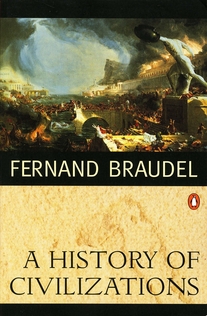
A History of Civilizations
. List of Maps. . . Translator's Introduction. . . By Way of Preface. . . Introduction: History and the Present Day. . I.A History of Civilizations. . 1. Changing Vocabulary. 3. 2. The Study of Civilization Involves All the Social Sciences. 9. 3. The Continuity of Civilizations. 24. II. Civilizations Outside Europe. . Pt. I. Islam and the Muslim World. . 4. History. 41. 5. Geography. 55. 6. The Greatness and Decline of Islam. 69. 7. The Revival of Islam Today. 93. Pt. II. Africa. . 8. The Past. 117. 9. Black Africa: Today and Tomorrow. 137. Pt. III. The Far East. . 10. An Introduction to the Far East. 155. 11. The China of the Past. 171. 12. China Yesterday and Today. 199. 13. India Yesterday and Today. 217. 14. The Maritime Far East. 256. 15. Japan. 276. III. European Civilizations. . Pt. I. Europe. . 16. Geography and Freedom. 307. 17. Christianity, Humanism and Scientific Thought. 333. 18. The Industrialization of Europe. 373. 19. Unity in Europe. 399. Pt. II. America. . 20. Latin America, the Other New World. 427. 21. America par excellence: the United States. 458. 22. Failures and Difficulties: From Yesterday to the Present. 480. 23. An English-speaking Universe. 507. Pt. III. The Other Europe: Muscovy, Russia, the USSR and the CIS. . 24. From the Beginning to the October Revolution of 1917. 527. 25. The USSR after 1917. 547. . Index. 575.
See all

The Pattern On The Stone
Most people are baffled by how computers work and assume that they will never understand them. What they don't realize -- and what Daniel Hillis's short book brilliantly demonstrates -- is that computers' seemingly complex operations can be broken down into a few simple parts that perform the same simple procedures over and over again. Computer wizard Hillis offers an easy-to-follow explanation of how data is processed that makes the operations of a computer seem as straightforward as those of a bicycle. Avoiding technobabble or discussions of advanced hardware, the lucid explanations and colorful anecdotes in The Pattern on the Stone go straight to the heart of what computers really do. Hillis proceeds from an outline of basic logic to clear descriptions of programming languages, algorithms, and memory. He then takes readers in simple steps up to the most exciting developments in computing today -- quantum computing, parallel computing, neural networks, and self-organizing systems. Written clearly and succinctly by one of the world's leading computer scientists, The Pattern on the Stone is an indispensable guide to understanding the workings of that most ubiquitous and important of machines: the computer.
See all

Writing and Script: A Very Short Introduction
Without writing, there would be no records, no history, no books, and no emails. Writing is an integral and essential part of our lives; but when did it start? Why do we all write differently and how did writing develop into what we use today? All of these questions are answered in this Very Short Introduction. Starting with the origins of writing five thousand years ago, with cuneiform and Egyptian hieroglyphs, Andrew Robinson explains how these early forms of writing developed into hundreds of scripts including the Roman alphabet and the Chinese characters. He reveals how the modern writing symbols and abbreviations we take for granted today - including airport signage and text messaging - resemble ancient ones much more closely than we might think. ABOUT THE SERIES: The Very Short Introductions series from Oxford University Press contains hundreds of titles in almost every subject area. These pocket-sized books are the perfect way to get ahead in a new subject quickly. Our expert authors combine facts, analysis, perspective, new ideas, and enthusiasm to make interesting and challenging topics highly readable.
See all
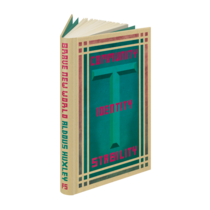
Aldous Huxley's Brave New World
- Comprehensive reading and study guides for some of the world's most important literary masterpieces- Concise critical excerpts provide a scholarly overview of each work- "The Story Behind the Story" details the conditions under which the work was written- Each book includes a biographical sketch of the author, a descriptive list of characters, an extensive summary and analysis, and an annotated bibliography
See all
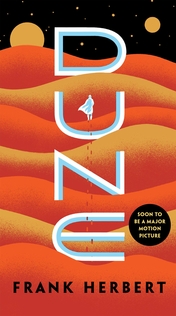
Dune
Before The Matrix, before Star Wars, before Ender's Game and Neuromancer, there was Dune, one of the greatest science fiction novels ever written.Melange, or 'spice', is the most valuable - and rarest - element in the universe. And it can only be found on a single planet: the inhospitable desert world Arrakis.Whoever controls Arrakis controls the spice. And whoever controls the spice controls the universe.When stewardship of Arrakis is transferred to his house, Paul Atreides must travel to the planet's dangerous surface to ensure the future of his family and his people. But as malevolent forces explode into conflict around him, Paul is thrust into a great destiny beyond his understanding.And in this game of power, only those who can conquer their fear will survive.
See all
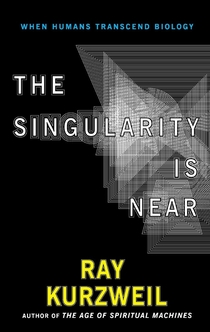
The Singularity is Near
The great inventor and futurist Ray Kurzweil is one of the best-known and controversial advocates for the role of machines in the future of humanity. In his latest, thrilling foray into the future, he envisions an event—the “singularity”—in which technological change becomes so rapid and so profound that our bodies and brains will merge with our machines. The Singularity Is Near portrays what life will be like after this event—a human-machine civilization where our experiences shift from real reality to virtual reality and where our intelligence becomes nonbiological and trillions of times more powerful than unaided human intelligence. In practical terms, this means that human aging and pollution will be reversed, world hunger will be solved, and our bodies and environment transformed by nanotechnology to overcome the limitations of biology, including death. We will be able to create virtually any physical product just from information, resulting in radical wealth creation. In addition to outlining these fantastic changes, Kurzweil also considers their social and philosophical ramifications. With its radical but optimistic view of the course of human development, The Singularity Is Near is certain to be one of the most widely discussed and provocative books of 2005.
See all

Infinite in All Directions
Infinite in All Directions is a popularized science at its best. In Dyson's view, science and religion are two windows through which we can look out at the world around us. The book is a revised version of a series of the Gifford Lectures under the title "In Praise of Diversity" given at Aberdeen, Scotland. They allowed Dyson the license to express everything in the universe, which he divided into two parts in polished prose: focusing on the diversity of the natural world as the first, and the diversity of human reactions as the second half. Chapter 1 is a brief explanation of Dyson's attitudes toward religion and science. Chapter 2 is a one–hour tour of the universe that emphasizes the diversity of viewpoints from which the universe can be encountered as well as the diversity of objects which it contains. Chapter 3 is concerned with the history of science and describes two contrasting styles in science: one welcoming diversity and the other deploring it. He uses the cities of Manchester and Athens as symbols of these two ways of approaching science. Chapter 4, concerned with the origin of life, describes the ideas of six illustrious scientists who have struggled to understand the nature of life from various points of view. Chapter 5 continues the discussion of the nature and evolution of life. The question of why life characteristically tends toward extremes of diversity remains central in all attempts to understand life's place in the universe. Chapter 6 is an exercise in eschatology, trying to define possible futures for life and for the universe, from here to infinity. In this chapter, Dyson crosses the border between science and science fiction and he frames his speculations in a slightly theological context.
See all

What Technology Wants
From the author of the New York Times bestseller The Inevitable— a sweeping vision oftechnology as a living force that can expand our individual potential This provocative book introduces a brand-new view of technology. It suggests that technology as a whole is not a jumble of wires and metal but a living, evolving organism that has its own unconscious needs and tendencies. Kevin Kelly looks out through the eyes of this global technological system to discover "what it wants." He uses vivid examples from the past to trace technology's long course and then follows a dozen trajectories of technology into the near future to project where technology is headed. This new theory of technology offers three practical lessons: By listening to what technology wants we can better prepare ourselves and our children for the inevitable technologies to come. By adopting the principles of pro-action and engagement, we can steer technologies into their best roles. And by aligning ourselves with the long-term imperatives of this near-living system, we can capture its full gifts. Written in intelligent and accessible language, this is a fascinating, innovative, and optimistic look at how humanity and technology join to produce increasing opportunities in the world and how technology can give our lives greater meaning.
See all

The Player Of Games
The second Culture novel from the awesome imagination of Iain M. Banks, a modern master of science fiction.The Culture - a human/machine symbiotic society - has thrown up many great Game Players, and one of the greatest is Gurgeh. Jernau Morat Gurgeh. The Player of Games. Master of every board, computer and strategy.Bored with success, Gurgeh travels to the Empire of Azad, cruel and incredibly wealthy, to try their fabulous game ... a game so complex, so like life itself, that the winner becomes emperor. Mocked, blackmailed, almost murdered, Gurgeh accepts the game, and with it the challenge of his life - and very possibly his death.Praise for the Culture series:'Epic in scope, ambitious in its ideas and absorbing in its execution' Independent on Sunday'Banks has created one of the most enduring and endearing visions of the future' Guardian'Jam-packed with extraordinary invention' Scotsman'Compulsive reading' Sunday Telegraph The Culture series:Consider PhlebasThe Player of GamesUse of WeaponsThe State of the ArtExcessionInversionsLook to WindwardMatterSurface DetailThe Hydrogen SonataOther books by Iain M. Banks:Against a Dark BackgroundFeersum EndjinnThe Algebraist
See all

Consider Phlebas
**Soon to be adapted as a major TV series**The war raged across the galaxy. Billions had died, billions more were doomed. Moons, planets, the very stars themselves, faced destruction, cold-blooded, brutal, and worse, random. The Idirans fought for their Faith; the Culture for its moral right to exist. Principles were at stake. There could be no surrender.Within the cosmic conflict, an individual crusade. Deep within a fabled labyrinth on a barren world, a Planet of the Dead proscribed to mortals, lay a fugitive Mind. Both the Culture and the Idirans sought it. It was the fate of Horza, the Changer, and his motley crew of unpredictable mercenaries, human and machine, to actually find it - and with it their own destruction.Consider Phlebas is a space opera of stunning power and awesome imagination, from a modern master of science fiction. Praise for the Culture series:'Epic in scope, ambitious in its ideas and absorbing in its execution' Independent on Sunday'Banks has created one of the most enduring and endearing visions of the future' Guardian'Jam-packed with extraordinary invention' Scotsman'Compulsive reading' Sunday Telegraph The Culture series:Consider PhlebasThe Player of GamesUse of WeaponsThe State of the ArtExcessionInversionsLook to WindwardMatterSurface DetailThe Hydrogen SonataOther books by Iain M. Banks:Against a Dark BackgroundFeersum EndjinnThe Algebraist
See all
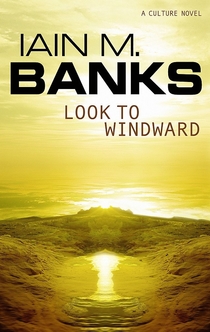
Look To Windward
The seventh Culture book from the awesome imagination of Iain M. Banks, a modern master of science fiction.It was one of the less glorious incidents of a long-ago war. It led to the destruction of two suns and the billions of lives they supported. Now, eight hundred years later, the light from the first of those ancient mistakes has reached the Culture Orbital, Masaq'. The light from the second may not.Praise for the Culture series:'Epic in scope, ambitious in its ideas and absorbing in its execution' Independent on Sunday'Banks has created one of the most enduring and endearing visions of the future' Guardian'Jam-packed with extraordinary invention' Scotsman'Compulsive reading' Sunday Telegraph The Culture series:Consider PhlebasThe Player of GamesUse of WeaponsThe State of the ArtExcessionInversionsLook to WindwardMatterSurface DetailThe Hydrogen SonataOther books by Iain M. Banks:Against a Dark BackgroundFeersum EndjinnThe Algebraist
See all







